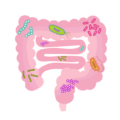What is Dyspnea?
This is the medical term for shortness of breath. The word is derived from the Greek, dys meaning abnormal + pnein, to breathe. We are aware, of course, that we get “out of breath” when we exercise and that this is perfectly normal. We are also aware that exercise breathlessness is less acute after physical training. Dyspnea is applied to breathlessness at rest and when it is greater than expected with the degree of exertion. It is a symptom of disease. Chronic dyspnea is defined as resting shortness of breath that lasts more than one month. Most cases of dyspnea result from asthma, heart failure, myocardial ischemia (shortage of oxygen containing blood to the heart), chronic obstructive pulmonary disease, pneumonia and is even related to “psychogenic” disorders (meaning that there is no evidence of physical disease). Associated symptoms and risk factors such as smoking, chemical exposures and medication use also need to be considered and the examination of the patient by a physician, together with laboratory studies, may lead to an obvious conclusion. However, this does not necessarily lead to appropriate treatment.
The Anaerobic Threshold
We all know, of course, that we need oxygen for life and that we die quickly without it. However, most people tend to take it for granted and have little or no interest in what we do with it or why. Heart and lung activity depend on efficient breathing to provide the continuous influx of oxygen that is delivered in the blood. The functions of both the heart and lung are controlled by a network of neurons located within the lower brainstem, the part of the brain that connects with the spinal cord. The basic rhythm of breathing is generated by these nervous mechanisms. This means, of course, that damaged mechanisms in the brain can be responsible for failure to breathe. An example of this is opioid poisoning. The common condition of sleep apnea is also an example of brainstem disease.
The use of oxygen in our cells is called oxidative respiration (also known by the technical term, redox) and refers to the complex mechanisms that yield cellular energy. This activity takes place within mitochondria that exist inside all our cells. Perhaps we can refer to this as the action of the primary engine, the engine that requires oxygen to function. If for any reason this mechanism is exhausted for lack of one or more of the components that enable it to function, another form of energy production automatically comes into play. This does not depend on the presence of oxygen to function. Perhaps we can refer to it as the secondary (backup) engine. The function of this secondary engine comes into play automatically and is referred to as “the anaerobic threshold”. This form of energy is less efficient and causes a sustained increased in lactic acid and metabolic acidosis. A person may notice, for example, that when climbing steps the legs become fatigued but that after resting for a short while, recovery occurs. This is because the lactic acid generated in the muscles is consumed and normal oxidative metabolism is restored. It is much more noticeable in older individuals, because the efficiency of oxidative metabolism gradually declines with age. Undue or prolonged physical or mental stress requires huge amounts of energy to perform the essential adaptive response and may cause it to run out of one or more of the necessary components that are used in the primary “engine”.
Thiamine, Dyspnea, and Cellular Energy
Carbohydrate from food is broken down to glucose and converted to glycogen where it is stored in the liver. When any cellular activity is mobilized (e.g. a run in the park), an enzyme in the liver converts glycogen to glucose which is then oxidized (burned) as fuel. Fatty acids are also used as fuel and thiamine (vitamin B1) is the vital component for the oxidation of both fatty acids and glucose. Glucose is the only fuel used by the brain.
Muscle Weakness and Dyspnea
As already indicated, dyspnea is a common, disabling symptom in chronic heart failure. Weakness in the muscles used for breathing is important in the dyspnea experienced by some patients with pulmonary disease and studies have shown that patients with stable chronic heart failure have weakness in these chest muscles. The cellular energy deficiency that gives rise to dyspnea also gives rise to weakness in the muscles, thus aggravating the clinical situation.
There is a serious lethal disease known as Amyotrophic lateral sclerosis (sometimes known as Lou Gehrig’s disease) that leads to chronic respiratory failure from failure of the diaphragm (the large muscle that separates the chest cavity from the abdominal contents and used in breathing). This is a major driver of dyspnea and mortality. In this disease, energy expenditure is known to be often abnormally high and this may be an important observation. If energy expenditure exceeds its production, the deficit must be a cause of the dysfunction.
Energy Synthesis Versus Expenditure
I live in a retirement home and of course it is not uncommon to see people being pushed around in a wheelchair and being treated with nasal oxygen. The question that always occurs to me is whether the sole administration of oxygen is considered to be effective. The mechanism of oxidation requires oxygen of course, but proper fuel (glucose) and vitamin B complex are both necessities. If the patient is consuming a normal diet, the glucose will be available but there is generally nothing to indicate whether an adequate supply of B complex is part of that diet. Often sick people do not eat very well and I would insist on a supplement of B complex to such an individual if I were in charge.
Although ALS is relatively rare, if energy expenditure exceeds synthesis as the underlying cause, perhaps a method of accelerating its synthesis might be a logical approach and there is some precedent for approaching it this way. Without going into the technical details, redox (reduction/oxidation) is the technical word used to describe the essential reactions of oxidation in the synthesis of energy and I came across two manuscripts that suggest the need for research into thiamine metabolism in this disease.
Why Thiamine?
In our book “Thiamine Deficiency Disease, Dysautonomia and High Calorie Malnutrition“, we describe the case of an eight-year-old child who had suffered from chronic asthma from the age of four years. She was so allergic to virtually any mattress that she had to sleep on a plastic lawn chair. The bronchial tubes are closed and opened under the influence of the autonomic nervous system (ANS), so asthma is really an example of dysautonomia (abnormal action of the ANS). This means that the bronchial tubes shut down abnormally, making breathing exquisitely difficult. The controls of the ANS in the brain are energy dependent and dysautonomia results from lack of energy in those control centers. The signaling mechanisms become distorted. Since thiamine sits astride the chemistry of energy production, this girl was given large doses of thiamine to which she responded dramatically. It is an example of drawing a logical deduction from understanding the actions of the brain when oxidative metabolism is compromised. I am not suggesting that large doses of thiamine would be beneficial to all cases of asthma, but I am suggesting that an imbalance of nervous control is responsible for a lot of poorly understood disease.
How We Got Here: The Flexner Report
In 1910, a study of American medical schools resulted in the Flexner report, written by Abraham Flexner under the aegis of the Carnegie Foundation. Many aspects of the present-day American medical philosophy stem from this report and its aftermath. Homeopathy and natural medicines were derided and some doctors were even jailed. Colleges in electrotherapy were closed. Flexner obtained his information by visiting Germany where the laboratory was supposed to prove the exact nature of the disease. It is this model that persists in America today, resulting in the collision between Orthodox and Alternative medicine (the use of nutrients to assist the natural process of healing by stimulating energy production). It is also the reason why Orthodox physicians refuse to recognize that abnormal electrochemical reactions in the brain are responsible for symptoms. Because they do not look for evidence of nutrient deficiency and the present standard laboratory tests are negative, they refer to the symptoms as psychosomatic. For many years it has always been a mystery to me why a patient with long-suffering problems of health can be accused of inventing symptoms “to hide behind some form of reality”. There is every reason to replace this idea with a mild disruption of brain chemistry as the underlying cause. It is also the reason why psychogenesis is included as one of the causes of dyspnea. The word psychosomatic should be abolished.
We Need Your Help
More people than ever are reading Hormones Matter, a testament to the need for independent voices in health and medicine. We are not funded and accept limited advertising. Unlike many health sites, we don’t force you to purchase a subscription. We believe health information should be open to all. If you read Hormones Matter, like it, please help support it. Contribute now.
Yes, I would like to support Hormones Matter.
Photo by Mick Haupt on Unsplash.















I’ve experienced breaches of “the anaerobic threshold” most notably in my thighs after exercise since i was 26 (first noticeable snowboarding)
Over the years the threshold lowered till i started getting lactic acid burning from just walking stairs or standing.
After incorporating a high fat, low carb, no sugar, alcohol. High organ meats, minerals from food such as bee pollen, whole food c, magnesium etc things improved over the past 4 years.
I still experience burning after 6 squat reputations or more than one flight of stairs.
I’ve been consuming 350mg of allithiamine for 4 months, with a whole food b complex (additionally with the bee pollen and nutritional yeast that I’ve already been consuming) which has improved sleep, digestion and energy – not yet seen any anaerobic improvements.
Recently started incorporating PAO’s – omega 6/3 via seed oils.
If anyone finds any relief please let me know. I’ll also update this thread with the same, it may be worth increasing the dosage some more or more time,.
Hey Derrick! I plan on buying and reading your new book soon. I started taking TTFD a while back and it’s worked very well, but it always felt like something was missing. I started taking magnesium taurate with the thiamin today at 200mg. 1 hour later my initial symptoms of anxiety roared a bit. My hands started to sweat, I was very light headed, and my heart slightly raced but the pain in my spine was eradicated during the episode. I just felt all around very odd. And also whatever was in my intestines evacuated. Along with frequent urination.
The symptoms were surprisingly short, about an hour, and right after I had a sense of calmness and tranquility and quietness in my mind and body. I believe this was the missing part. The previous form of magnesium I took apparently want good enough (magnesium chloride). Still feel the after effects of the anxiety though and the odd relaxed feeling. And I plan on pushing through, this is what happened when I first started taking TTFD itself. It took 3-5 days to completely subside.
Are there any tips on dealing with the paradox symptoms? I took all the supplements on an empty stomach, I feel like consuming some oatmeal or food in general will blunt the surge of nutrients.
This was fairly severe but brief paradox and must have indeed been the missing factor. I imagine that if you keep on doing what you are presently doing, things will gradually even out. There is nothing you can do about the symptoms during paradox. You just have to wait until it subsides spontaneously. The important thing that I have learned is that paradox is the best forecast that you can have for ultimate success.
Dr. Lonsdale, when I get stressed I get loose stool. And since I am a worried person, I get a lot of it. That is not good because although I eat well, I loose the nutrients if I don’t absorb them. I am showing signs of osteopemia and that is happening because I am loosing calcium in the urine. After reading the post of Janes McOmber, I cross reference with another post of someone talking about thiamine, taurine and magnesium and that other person posted some interesting articles talking bones and fibromyalgia. Can my loose stool be caused by thiamine deficiency? Can the 3 of them together help me with my bones as well?
This is an interesting post, because it is a typical example of the brain/body relationship.Notice that Patricia claims to be a worried person as well as having typical irritable bowel syndrome (IBS). The fact is that poor oxygen utilization in brain is responsible for the anxiety and the IBS. The osteopenia is a result of the loss of nutrients. If sugar and/or alcohol are part of your diet, get rid of them absolutely. You need large doses of thiamine and magnesium, together with a well-rounded multivitamin. Expect to feel worse initially, but persist and you will find that it comes out with the improvement. The time for worsening is an unpredictable one but it can be several weeks.
Dr. Lonsdale, I added Taurine to Thiamine and Magnesium and a multivitamin and it helped a look to reduce back pain. I guess my muscles liked the addition.
Have you ever encountered glutamate sensitivity as cause of central apnea causing a similar dyspnea/air hunger
Hi James, make I ask why you chose the Magnesium Taurine in particular?
Hi Doctor Lonsdale,
I have a quick question for you regarding TTFD. It is frequently listed amongst common chelators like EDTA, but I can’t find much info on why it is a chelator. Do you have any information on this attribute, and is there any reason for concern that it could move metals around in the body?
Thank you,
Jame
The only experimental work that has been done with thiamine as far as I know is with lead poisoning in animal systems. What is interesting about this work is that with pharmaceutical doses of thiamine, lead is excreted through the bile ducts. Therefore, the excreted lead is found in stool, not in urine. The mechanism is unknown but thiamine given with EDTA apparently works better than with each of the two agents on their own. It suggests that thiamine would be a safe method of treating lead poisoning in people.
Bless your big heart. Great blog post!!!… That dreaded flexnor report indeed launched us into the dark ages where healing and maintaining good health is somehow always elusive… And thank you for this too:
“For many years it has always been a mystery to me why a patient with long-suffering problems of health can be accused of inventing symptoms “to hide behind some form of reality”. There is every reason to replace this idea with a mild disruption of brain chemistry as the underlying cause. It is also the reason why psychogenesis is included as one of the causes of dyspnea. The word psychosomatic should be abolished.”